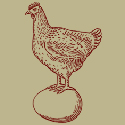- melon cat
- Jan 21, 2010
-

-
Nap Ghost
|
You can use the ROUND() function to say how many decimal places you want to go to.
=CONCATENATE(IF(E8<F8,"+",""),ROUND(((F8-E8)/E8) * 100, 2),"%")
Just put the rate formula in the cell ((F8-E8)/E8) or whatever), then set the number format to "Custom", and put in something like "+0.00%;-0.00%".

But in either vase, I've hit another bump. I'm trying to set up the spreadsheet so the text turns red when the formula returns a -ve value, and green when it returns a positive value. But it's only showing green regardless of whether it's positive or negative:

I think the conditional formatting isn't working because Excel doesn't see it negative or positive. It sees it as a digit, and since we're concatenating a + or - symbol, it can't tell the difference. Any suggested fixes for this?
|
 #
?
Jul 14, 2013 23:54
#
?
Jul 14, 2013 23:54
|
|
- Adbot
-
ADBOT LOVES YOU
|

|
|
#
?
Apr 27, 2024 18:11
|
|
- ShimaTetsuo
- Sep 9, 2001
-

Maximus Quietus
|
I don't have a copy of 2003 to test on right now, but it definitely works in 2007.
Your conditional formatting doesn't work for the same reason I advised against the "concatenate" method: your result is not a number, it is a string, and it will not respond properly to checking whether it is positive.
What exactly does it return if you put in, say, 0.123456 in a cell, and set its custom format to:
+0.00%[Green];-0.00%[Red]
|
 #
?
Jul 15, 2013 01:57
#
?
Jul 15, 2013 01:57
|
|
- Ragingsheep
- Nov 7, 2009
-
|
I've got a whole bunch of data series that I want to define as dynamic ranges. Is there anyway to quickly define them or am I stuck with doing it by hand?
Nvm, wrote my own VBA code.
Ragingsheep fucked around with this message at 03:41 on Jul 15, 2013
|
 #
?
Jul 15, 2013 02:05
#
?
Jul 15, 2013 02:05
|
|
- melon cat
- Jan 21, 2010
-

-
Nap Ghost
|
What exactly does it return if you put in, say, 0.123456 in a cell, and set its custom format to:
+0.00%[Green];-0.00%[Red]
|
 #
?
Jul 15, 2013 05:15
#
?
Jul 15, 2013 05:15
|
|
- celestial teapot
- Sep 9, 2003
-

He asked my religion and I replied "agnostic." He asked how to spell it, and remarked with a sigh: "Well, there are many religions, but I suppose they all worship the same God."
|
If I'm not misunderstanding you, then unless you have a shitton of rows it would be faster to just get it working with one row and auto-fill than rewrite the function to get it working with array arguments.
|
 #
?
Jul 20, 2013 22:50
#
?
Jul 20, 2013 22:50
|
|
- ShimaTetsuo
- Sep 9, 2001
-

Maximus Quietus
|
He wants the function to return the best score in the list, not the list of scores.
Don't rewrite the function, just write another function that takes in one string and one array of strings, loops through the array, calling your original function on each element and keeping a running maximum.
|
 #
?
Jul 20, 2013 23:06
#
?
Jul 20, 2013 23:06
|
|
- celestial teapot
- Sep 9, 2003
-

He asked my religion and I replied "agnostic." He asked how to spell it, and remarked with a sigh: "Well, there are many religions, but I suppose they all worship the same God."
|
Or =MAX() ? You'd have to use cells to store values but it would be one less UDF.
|
 #
?
Jul 20, 2013 23:45
#
?
Jul 20, 2013 23:45
|
|
- celestial teapot
- Sep 9, 2003
-

He asked my religion and I replied "agnostic." He asked how to spell it, and remarked with a sigh: "Well, there are many religions, but I suppose they all worship the same God."
|
It looks like you're trying to normalize and map relationships but I'm not sure you're doing it the right way. Get on AIM?
|
 #
?
Jul 21, 2013 19:41
#
?
Jul 21, 2013 19:41
|
|
- celestial teapot
- Sep 9, 2003
-

He asked my religion and I replied "agnostic." He asked how to spell it, and remarked with a sigh: "Well, there are many religions, but I suppose they all worship the same God."
|
I'm pretty sure I can make this much less of a pain in your rear end, but it's going to require some back and forth. Shoot me an IM and I'll help you out.
|
 #
?
Jul 22, 2013 00:45
#
?
Jul 22, 2013 00:45
|
|
- RICHUNCLEPENNYBAGS
- Dec 21, 2010
-

|
Can anyone recommend resources for learning more about VSTO? I use VBA and you can do some neat stuff with it, but VSTO seems more versatile. And the JS stuff doesn't really seem ready for primetime yet; there are a handful of things you can't do easily with VBA in it, but it's missing huge swaths of functionality VBA does have.
|
 #
?
Jul 23, 2013 02:04
#
?
Jul 23, 2013 02:04
|
|
- me your dad
- Jul 25, 2006
-

|
I have a column containing email domains. I want to isolate the TLD into a column (.com, .org, and so on).
I normally do this with =mid(b2,find(".",b2)+1,3) but some of the domains have multiple periods, such as 104acv.skc.army.mil (we deal with government and military data). Another domain may only have one period like gmail.com, and another may have two periods, such as us.army.mil.
Is there a way to find the last occurrence of the period, and copy out the characters following it?
|
 #
?
Jul 24, 2013 18:51
#
?
Jul 24, 2013 18:51
|
|
- Raven31
- Feb 4, 2006
-
|
I have a column containing email domains. I want to isolate the TLD into a column (.com, .org, and so on).
I normally do this with =mid(b2,find(".",b2)+1,3) but some of the domains have multiple periods, such as 104acv.skc.army.mil (we deal with government and military data). Another domain may only have one period like gmail.com, and another may have two periods, such as us.army.mil.
Is there a way to find the last occurrence of the period, and copy out the characters following it?
This solution should work.
http://stackoverflow.com/questions/350264/how-can-i-perform-a-reverse-string-search-in-excel-without-using-vba
|
 #
?
Jul 24, 2013 19:33
#
?
Jul 24, 2013 19:33
|
|
- DukAmok
- Sep 21, 2006
-

Using drugs will kill. So be for real.
|
I have a column containing email domains. I want to isolate the TLD into a column (.com, .org, and so on).
I normally do this with =mid(b2,find(".",b2)+1,3) but some of the domains have multiple periods, such as 104acv.skc.army.mil (we deal with government and military data). Another domain may only have one period like gmail.com, and another may have two periods, such as us.army.mil.
Is there a way to find the last occurrence of the period, and copy out the characters following it?
If you can use VBA there's the "InStrRev" function to search from right to left.
If you need to do cell formulas, I found this one on StackOverflow that uses substitution with '|' characters to find it. Works pretty well, I modified it to work with periods instead of spaces below:
code:=RIGHT(A1,LEN(A1)-FIND("|",SUBSTITUTE(A1,".","|",LEN(A1)-LEN(SUBSTITUTE(A1,".","")))))
|
 #
?
Jul 24, 2013 19:38
#
?
Jul 24, 2013 19:38
|
|
- me your dad
- Jul 25, 2006
-

|
Thank you both - I'll give it a shot to see what I can make happen.
Edit - The formula above worked perfectly - thanks again!
me your dad fucked around with this message at 19:56 on Jul 24, 2013
|
 #
?
Jul 24, 2013 19:44
#
?
Jul 24, 2013 19:44
|
|
- ZerodotJander
- Dec 29, 2004
-

Chinaman, explain!
|
Couldn't you also have just taken the last 3 characters? Something like =SUBSTITUTE(RIGHT(TRIM(A1),3),".","")
|
 #
?
Jul 26, 2013 18:54
#
?
Jul 26, 2013 18:54
|
|
- RICHUNCLEPENNYBAGS
- Dec 21, 2010
-

|
I think it makes it much easier to just keep a UDF with regexes on-hand to solve string manipulation problems. Something to the effect of this
code:Function RegExReplace(Original As String, MatchedText As String, Replacement As String, Optional IgnoreCase As Boolean = False, _
Optional Multiline As Boolean = True, Optional IsGlobal As Boolean = True)
Dim Original_ As String
Original_ = Original
Dim RegEx
Set RegEx = CreateObject("vbscript.regexp")
With RegEx
.IgnoreCase = IgnoreCase
.Multiline = Multiline
.Pattern = MatchedText
.Global = IsGlobal
End With
RegExReplace = RegEx.Replace(Original_, Replacement)
End Function
But then, for instance, if I wanted the domain of an e-mail address, I could do something like =RegExReplace(RC[-3], ".*\.(\w+)\s*$", "$1")
I have another one that uses the VBA split function, which is also pretty handy.
I'm actually curious if anyone else has any really useful general-purpose UDFs.
RICHUNCLEPENNYBAGS fucked around with this message at 02:35 on Jul 27, 2013
|
 #
?
Jul 27, 2013 02:30
#
?
Jul 27, 2013 02:30
|
|
- Ragingsheep
- Nov 7, 2009
-
|
Anyone know of any good guides on PowerPivot? Like starting from the basics.
|
 #
?
Jul 27, 2013 11:43
#
?
Jul 27, 2013 11:43
|
|
- celestial teapot
- Sep 9, 2003
-

He asked my religion and I replied "agnostic." He asked how to spell it, and remarked with a sigh: "Well, there are many religions, but I suppose they all worship the same God."
|
One down...
code:Sub UnMergeFill()
'---------------------------------------------------------------------------------------
' Copyright : 2013-08-01
' Author : celestial teapot
' Purpose : remove all merged cells from active worksheet and fill values
' License : MIT License [url]http://opensource.org/licenses/MIT[/url]
'---------------------------------------------------------------------------------------
Dim proc_name As String
proc_name = "unmergefill"
On Error GoTo ErrorHandler
'''''''''''''''''''
'Variables '
'''''''''''''''''''
Dim haystack As range
Dim oneCell As range
Dim mrgAreaAddress As String
Dim mrgCellCount As Long
Dim mrgValue As Variant
'''''''''''''''''''
'Declarations '
'''''''''''''''''''
Set haystack = ActiveSheet.UsedRange
'''''''''''''''''''
'Action '
'''''''''''''''''''
For Each oneCell In haystack
mrgAreaAddress = oneCell.MergeArea.Address
mrgCellCount = oneCell.MergeArea.Cells.count
If mrgCellCount > 1 Then
With oneCell.MergeArea
.MergeCells = False
.Value = oneCell.Value
End With
End If
Next oneCell
Endgame:
Exit Sub 'Exit before error handler
ErrorHandler:
MsgBox "There was an unhandled exception in function " _
& proc_name & _
". Source: " & Err.Source & _
"Error number: " & Err.Number & _
" Description: " & Err.Description
Resume Endgame
End Sub
celestial teapot fucked around with this message at 00:29 on Aug 2, 2013
|
 #
?
Aug 1, 2013 18:49
#
?
Aug 1, 2013 18:49
|
|
- Requiem
- Jan 29, 2003
-
You can't bring that weak-ass shit up in this humpity-bumpity! This ain't Club Med, baby!
|
Perfect, friends--it works.
Old James, please PM me contact info for PayPal?
Hi again, folks. I'm stumped again trying to combine ISBLANK and CONCATENATE. I find I'm smart enough to regurgitate your help (from June, p. 25 of this thread) but not to troubleshoot when I'm altering the context. Sorry...
Here's the formula I currently have:
code:=CONCATENATE(A2,"<br>",L$1," ",L2,"<br>",M$1," ",M2,"<br>",N$1," ",N2,"<br>",O$1," ",O2,"<br>",P$1," ",P2,"<br>",Q$1," ",Q2,"<br><hr><br>")
quote:Scott
Fruit: Apple
Vegetable: Cucumber
Meat:
Dessert: Ice cream
Drink: Beer
Starter:
--------------------------------------------------------------------------------
Alan
Fruit:
Vegetable: Lettuce
Meat: Pork
Dessert:
Drink: Wine
Starter:
--------------------------------------------------------------------------------
Don
Fruit: Banana
Vegetable:
Meat: Beef
Dessert:
Drink: Hard Liquor
Starter:
--------------------------------------------------------------------------------
But I want unanswered questions hidden for each person. I WANT it to look like this:
quote:
Scott
Fruit: Apple
Vegetable: Cucumber
Dessert: Ice cream
Drink: Beer
--------------------------------------------------------------------------------
Alan
Vegetable: Lettuce
Meat: Pork
Drink: Wine
--------------------------------------------------------------------------------
Don
Fruit: Banana
Meat: Beef
Drink: Hard Liquor
--------------------------------------------------------------------------------
Can anyone help? Sorry to be so dense...
EDIT: Happy to offer $20 via PayPal to whomever can help...
|
 #
?
Aug 2, 2013 22:17
#
?
Aug 2, 2013 22:17
|
|
- RICHUNCLEPENNYBAGS
- Dec 21, 2010
-

|
Why can't you do something like: CONCATENATE(A1, IF(ISBLANK(A2), "", "Foo: " & A2))
I might consider using line breaks to make this less confusing... also perhaps & instead of the concatenate function.
This is good stuff.
RICHUNCLEPENNYBAGS fucked around with this message at 02:28 on Aug 3, 2013
|
 #
?
Aug 3, 2013 02:22
#
?
Aug 3, 2013 02:22
|
|
- Zorak of Michigan
- Jun 10, 2006
-


|
Hi again, folks. I'm stumped again trying to combine ISBLANK and CONCATENATE. I find I'm smart enough to regurgitate your help (from June, p. 25 of this thread) but not to troubleshoot when I'm altering the context. Sorry...
Here's the formula I currently have:
code:=CONCATENATE(A2,"<br>",L$1," ",L2,"<br>",M$1," ",M2,"<br>",N$1," ",N2,"<br>",O$1," ",O2,"<br>",P$1," ",P2,"<br>",Q$1," ",Q2,"<br><hr><br>")
But I want unanswered questions hidden for each person. I WANT it to look like this:
Can anyone help? Sorry to be so dense...
EDIT: Happy to offer $20 via PayPal to whomever can help...
E:fb.
This is notably filthy and there may be a cleaner way to do it, but the brute force approach looks like this:
code:=A2&"<br>"&IF(ISBLANK(L2),,(L$1&": "&L2&"<br>"))&IF(ISBLANK(M2),,(M$1&": "&M2&"<br>"))
&IF(ISBLANK(N2),,(N$1&": "&N2&"<br>"))&IF(ISBLANK(O2),,(O$1&": "&O2&"<br>"))
&IF(ISBLANK(P2),,(P$1&": "&P2&"<br>"))&IF(ISBLANK(Q2),,(Q$1&": "&Q2&"<br>"))&"<hr><br>"
You were clearly on a workable track with ISBLANK. You just need to get the if functions in order.
Zorak of Michigan fucked around with this message at 02:48 on Aug 3, 2013
|
 #
?
Aug 3, 2013 02:45
#
?
Aug 3, 2013 02:45
|
|
- RICHUNCLEPENNYBAGS
- Dec 21, 2010
-

|
That VBA would probably look something like this:
code:Function AttribSkipBlank(MyAttribute As String, MyValue As String) As String
Dim MyText As String
If MyValue <> "" Then
MyText = MyAttribute & ": " & MyValue & "<br>"
Else
MyText = ""
End If
AttribSkipBlank = MyText
End Function
RICHUNCLEPENNYBAGS fucked around with this message at 03:47 on Aug 3, 2013
|
 #
?
Aug 3, 2013 03:37
#
?
Aug 3, 2013 03:37
|
|
- Requiem
- Jan 29, 2003
-
You can't bring that weak-ass shit up in this humpity-bumpity! This ain't Club Med, baby!
|
E:fb.
This is notably filthy and there may be a cleaner way to do it, but the brute force approach looks like this:
code:=A2&"<br>"&IF(ISBLANK(L2),,(L$1&": "&L2&"<br>"))&IF(ISBLANK(M2),,(M$1&": "&M2&"<br>"))
&IF(ISBLANK(N2),,(N$1&": "&N2&"<br>"))&IF(ISBLANK(O2),,(O$1&": "&O2&"<br>"))
&IF(ISBLANK(P2),,(P$1&": "&P2&"<br>"))&IF(ISBLANK(Q2),,(Q$1&": "&Q2&"<br>"))&"<hr><br>"
You were clearly on a workable track with ISBLANK. You just need to get the if functions in order.
Zorak, thanks very much. Your code worked perfectly--and all I had to do was cut and paste, which for a guy who can see but not understand is a perfect solution!
PM me your PayPal info please?
With many thanks.
|
 #
?
Aug 3, 2013 20:21
#
?
Aug 3, 2013 20:21
|
|
- Zorak of Michigan
- Jun 10, 2006
-


|
Thanks but there's no need to pay me for that load of mess. I'm just addicted to problem solving. Also RICHUNCLEPENNYBAGS got the explanation out first.
Unless you just don't give a crap, there's no reason to come away not understanding how this works. IF() has three sections- the logical test, the value for the cell if the test evaluates true, and the value if the test evaluates false. You already figured out that the right test for this is ISBLANK(), so you have to start with
If L2 is blank, we want to print nothing, so the value if true is nothing. No change required!
If L2 is something, then ISBLANK(L2) is false. In that case we want the cell to print the value of L$1, then a colon and a space, then the value of L2, then the HTML linebreak. If we use the & operator to shove all that together, it becomes
so we stick that in the last bit of our IF function, wrapping it in parentheses because it makes me feel better to do so, and it becomes
code:=IF(ISBLANK(L2),,(L$1&": "&L2&"<br>"))
|
 #
?
Aug 4, 2013 02:39
#
?
Aug 4, 2013 02:39
|
|
- Requiem
- Jan 29, 2003
-
You can't bring that weak-ass shit up in this humpity-bumpity! This ain't Club Med, baby!
|
Thanks but there's no need to pay me for that load of mess. I'm just addicted to problem solving. Also RICHUNCLEPENNYBAGS got the explanation out first.
Unless you just don't give a crap, there's no reason to come away not understanding how this works. IF() has three sections- the logical test, the value for the cell if the test evaluates true, and the value if the test evaluates false. You already figured out that the right test for this is ISBLANK(), so you have to start with
You should make a living doing this. Thanks for the straightforward explanations. I admit I was stumped at & replacing CONCATENATE--it seemed like darkest of magic to me.
Thank you!
|
 #
?
Aug 4, 2013 05:40
#
?
Aug 4, 2013 05:40
|
|
- celestial teapot
- Sep 9, 2003
-

He asked my religion and I replied "agnostic." He asked how to spell it, and remarked with a sigh: "Well, there are many religions, but I suppose they all worship the same God."
|
Edit: Reworked, see below
celestial teapot fucked around with this message at 19:22 on Aug 7, 2013
|
 #
?
Aug 6, 2013 17:54
#
?
Aug 6, 2013 17:54
|
|
- celestial teapot
- Sep 9, 2003
-

He asked my religion and I replied "agnostic." He asked how to spell it, and remarked with a sigh: "Well, there are many religions, but I suppose they all worship the same God."
|
I lifted this RegEx replace module off some blog post, haven't tested it but it looks solid
code: '---------------------------------------------------------------------------------------
' Copyright : ?
' Purpose : Regular expression library
' License : ?
' Retrieved : [url]https://excelicious.wordpress.com/code-samples/vba/regex-functions/[/url]
'---------------------------------------------------------------------------------------
Public Function RXFIND(ByRef find_pattern As String, _
ByRef within_text As String, _
Optional ByVal start_num As Long = 0, _
Optional ByVal case_sensitive As Boolean = True) As Variant
' RXFIND - Returns the starting position of text matching the regex pattern
' find_pattern in the string within_text, if a match is found.
' Optional long start_num specifies the number of the character in within_text
' to start matching. Default=0.
' Optional boolean case_sensitive makes the pattern case sensitive if true,
' insensitive otherwise. Default=true.
Dim objRegex As VBScript_RegExp_55.RegExp
Dim colMatch As VBScript_RegExp_55.MatchCollection
Dim vbsMatch As VBScript_RegExp_55.Match
Dim sMatchString As String
Set objRegex = New VBScript_RegExp_55.RegExp
' Initialise Regex object
With objRegex
.Global = False
' Default is case sensitive
If case_sensitive Then
.IgnoreCase = False
Else: .IgnoreCase = True
End If
.Pattern = find_pattern
End With
' Return out of bounds error
If start_num >= Len(within_text) Then
RXFIND = CVErr(xlErrNum)
Exit Function
End If
' Get string from char at start_num
sMatchString = Right$(within_text, Len(within_text) - start_num)
' Create Match collection
Set colMatch = objRegex.Execute(sMatchString)
If colMatch.count = 0 Then ' No match
RXFIND = 0
Else
Set vbsMatch = colMatch(0)
RXFIND = vbsMatch.FirstIndex + start_num + 1
End If
End Function
Public Function ISRXMATCH(ByRef find_pattern As Variant, _
ByRef within_text As Variant, _
Optional ByVal case_sensitive As Boolean = True) As Boolean
' ISRXMATCH - Returns true if the regex pattern find_pattern is matched
' in the string within_text, false otherwise.
' Optional boolean case_sensitive makes the pattern case sensitive if true,
' insensitive otherwise. Default=true.
Dim objRegex As VBScript_RegExp_55.RegExp
Set objRegex = New VBScript_RegExp_55.RegExp
' Initialise Regex object
With objRegex
.Global = False
' Default is case sensitive
If case_sensitive Then
.IgnoreCase = False
Else: .IgnoreCase = True
End If
.Pattern = find_pattern
End With
' Test for pattern and return result
ISRXMATCH = objRegex.Test(within_text)
End Function
Public Function RXGET(ByRef find_pattern As Variant, _
ByRef within_text As Variant, _
Optional ByVal submatch As Long = 0, _
Optional ByVal start_num As Long = 0, _
Optional ByVal case_sensitive As Boolean = True) As Variant
' RXGET - Looks for a match for regular expression pattern find_pattern
' in the string within_text and returns it if found, error otherwise.
' Optional long submatch may be used to return the corresponding submatch
' if specified - otherwise the entire match is returned.
' Optional long start_num specifies the number of the character to start
' searching for in within_text. Default=0.
' Optional boolean case_sensitive makes the regex pattern case sensitive
' if true, insensitive otherwise. Default=true.
Dim objRegex As VBScript_RegExp_55.RegExp
Dim colMatch As VBScript_RegExp_55.MatchCollection
Dim vbsMatch As VBScript_RegExp_55.Match
Dim colSubMatch As VBScript_RegExp_55.SubMatches
Dim sMatchString As String
Set objRegex = New VBScript_RegExp_55.RegExp
' Initialise Regex object
With objRegex
.Global = False
' Default is case sensitive
If case_sensitive Then
.IgnoreCase = False
Else: .IgnoreCase = True
End If
.Pattern = find_pattern
End With
' Return out of bounds error
If start_num >= Len(within_text) Then
RXGET = CVErr(xlErrNum)
Exit Function
End If
sMatchString = Right$(within_text, Len(within_text) - start_num)
' Create Match collection
Set colMatch = objRegex.Execute(sMatchString)
If colMatch.count = 0 Then ' No match
RXGET = CVErr(xlErrNA)
Else
Set vbsMatch = colMatch(0)
If submatch = 0 Then ' Return match value
RXGET = vbsMatch.Value
Else
Set colSubMatch = vbsMatch.SubMatches ' Use the submatch collection
If colSubMatch.count < submatch Then
RXGET = CVErr(xlErrNum)
Else
RXGET = CStr(colSubMatch(submatch - 1))
End If
End If
End If
End Function
|
 #
?
Aug 6, 2013 18:24
#
?
Aug 6, 2013 18:24
|
|
- celestial teapot
- Sep 9, 2003
-

He asked my religion and I replied "agnostic." He asked how to spell it, and remarked with a sigh: "Well, there are many religions, but I suppose they all worship the same God."
|
Did this one the other day, don't think I posted it yet
code:Public Function Coalesce(ParamArray haystack() As Variant) As Variant
'---------------------------------------------------------------------------------------
' Copyright : 2013-08-01
' Author : celestial teapot
' Purpose : Returns the first of the haystack that has length greater than zero
' License : MIT License [url]http://opensource.org/licenses/MIT[/url]
'---------------------------------------------------------------------------------------
Dim proc_name As String
proc_name = "Coalesce"
On Error GoTo ErrorHandler
'''''''''''''''''''
'Variables '
'''''''''''''''''''
Dim i As Integer
'''''''''''''''''''
'Declarations '
'''''''''''''''''''
i = 0 'Start with the 0th array item
'''''''''''''''''''
'Action '
'''''''''''''''''''
Do While Len(haystack(i)) = 0 'While the "i"th array item is length zero
i = i + 1 'Go to the next one
If UBound(haystack) < i Then 'Unless we hit the end already
Coalesce = xlErrValue 'Then return an error value
GoTo Endgame 'and get the gently caress out of here
End If
Loop
Coalesce = haystack(i) 'Return the first non-null value in the list of haystack
Endgame:
Exit Function 'Exit before error handler
ErrorHandler:
MsgBox "There was an unhandled exception in function " _
& proc_name & _
". Source: " & Err.Source & _
"Error number: " & Err.Number & _
" Description: " & Err.Description
Resume Endgame
End Function
celestial teapot fucked around with this message at 19:55 on Aug 6, 2013
|
 #
?
Aug 6, 2013 18:25
#
?
Aug 6, 2013 18:25
|
|
- celestial teapot
- Sep 9, 2003
-

He asked my religion and I replied "agnostic." He asked how to spell it, and remarked with a sigh: "Well, there are many religions, but I suppose they all worship the same God."
|
I reworked the functions for counting distinct values by splitting them into separate functions using arrays.
code:Public Function Distinct(ByRef haystack As Variant) As Variant
'---------------------------------------------------------------------------------------
' Copyright : 2013-08-06
' Author : celestial teapot
' Purpose : Take an array and return an array with only the distinct values
' License : MIT License [url]http://opensource.org/licenses/MIT[/url]
'---------------------------------------------------------------------------------------
Dim proc_name As String
proc_name = "Distinct"
On Error GoTo ErrorHandler
'''''''''''''''''''
'Variables '
'''''''''''''''''''
Dim i As Long
Dim lower As Long
Dim upper As Long
Dim dict As Scripting.Dictionary
'''''''''''''''''''
'Declarations '
'''''''''''''''''''
Set dict = New Scripting.Dictionary
'''''''''''''''''''
'Action '
'''''''''''''''''''
lower = LBound(haystack) 'Start with the first non-null value in the array
upper = UBound(haystack) 'And end with the last one! :haw:
For i = lower To upper 'For each value in the array,
dict.Add haystack(i, 1), i 'add it to a dictionary array (excludes duplication)
Next i
Distinct = dict.Items
Endgame:
Exit Function 'Exit before error handler
ErrorHandler:
If Err.Number = 457 Then 'Ignore errors about duplicate dictionary values
Resume Next
End If
MsgBox "There was an unhandled exception in function " _
& proc_name & _
". Source: " & Err.Source & _
"Error number: " & Err.Number & _
" Description: " & Err.Description
Resume Endgame
End Function
code:UBound(distinct(array))
Let me know if I should keep posting these.
celestial teapot fucked around with this message at 20:53 on Aug 7, 2013
|
 #
?
Aug 7, 2013 20:50
#
?
Aug 7, 2013 20:50
|
|
- esquilax
- Jan 3, 2003
-

|
So my office recently upgraded from MS Office 2003 to Office 2010.
Most people there typically create tables in Excel and paste as a picture (enhanced metafile) into PowerPoint. When you do that using Office 2010 it copies the default gridlines and the red comment triangle and shows them when you paste the table. To make it look proper I need to remove gridlines and make sure the comments aren't being shown before I copy, which is annoying.
Is there any way copy and paste it as it show up if printed (i.e. no default gridlines, no comment or error triangles)?
|
 #
?
Aug 8, 2013 03:26
#
?
Aug 8, 2013 03:26
|
|
- Adbot
-
ADBOT LOVES YOU
|

|
|
#
?
Apr 27, 2024 18:11
|
|




 holds the answer to this question.
holds the answer to this question.


















